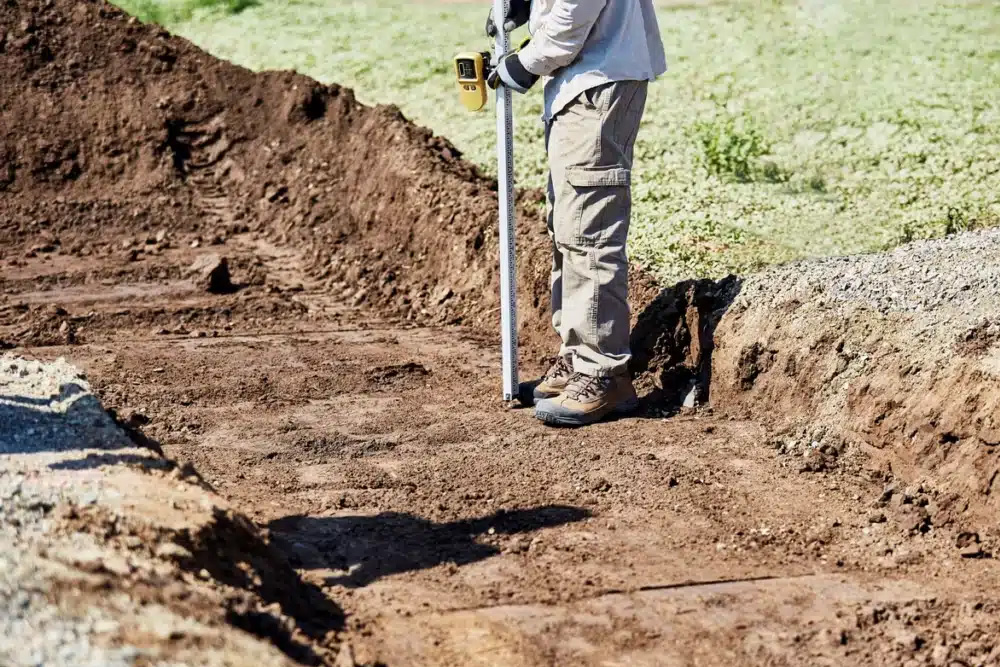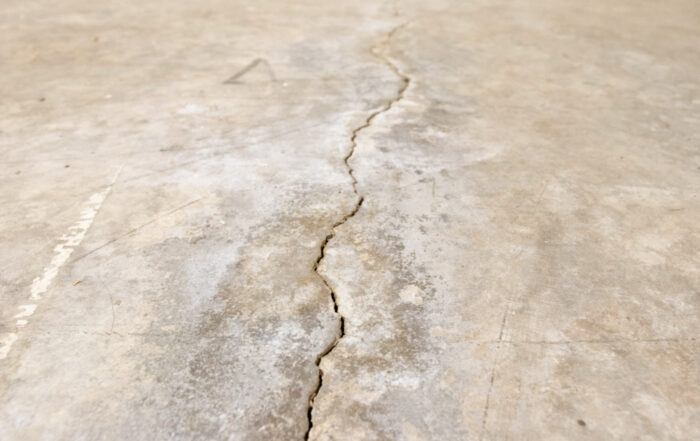How Poor Drainage Affects Your Foundation (And How to Fix It)

If you’re a homeowner in Texas, you already know the Lone Star State isn’t exactly famous for gentle weather. One minute, it’s scorching hot, and the next, a sudden downpour turns your yard into a mini river. But while unpredictable weather is part of the charm, it can also wreak havoc on your home—especially your foundation.
Poor drainage is one of the biggest culprits behind foundation problems in Texas homes. If you’ve noticed cracks in your walls, doors sticking, or your floors feeling like a fun-house attraction, bad drainage might be to blame. But don’t worry—there are ways to fix it before your home becomes the next Leaning Tower of Pisa.
Let’s break it down: what bad drainage does to your foundation, the telltale signs, and (most importantly) how to fix it.
The Relationship Between Water and Your Foundation
Your foundation is kind of like a sponge. It absorbs moisture from the surrounding soil, which expands when it’s wet and contracts when it’s dry. In Texas, where we often have long dry spells followed by torrential rain, this constant expansion and contraction can put serious stress on your foundation.
When water doesn’t drain properly around your home, it creates even more problems. Water pooling around your foundation can lead to erosion, soil instability, and eventually foundation movement—none of which are good news for your home’s structural integrity.
How Poor Drainage Damages Your Foundation
So, what exactly happens when your yard has lousy drainage? Here’s the domino effect of what too much (or too little) water does to your foundation:
1. Soil Erosion & Foundation Settlement
Texas soil, especially in places like Dallas, Austin, and Houston, contains a lot of clay. This means when it gets too much water, it swells up, and when it dries out, it shrinks. Over time, this back-and-forth movement creates gaps beneath your foundation, causing it to settle unevenly. That’s when you start noticing sloping floors or cracks in your walls.
2. Hydrostatic Pressure
If rainwater has nowhere to go, it starts pushing against your foundation walls. This pressure, known as hydrostatic pressure, can lead to cracks, leaks, and even basement flooding (if you have one). The pressure might not be visible at first, but over time, it weakens the concrete and causes major structural issues.
3. Slab Heave
In some cases, instead of sinking, your foundation might actually lift. When excess water collects under the concrete slab, it pushes up, causing what’s known as slab heave. This can make your floors uneven and put stress on your home’s structure.
4. Mold and Mildew Issues
Even if your foundation doesn’t show immediate signs of damage, poor drainage can create a moisture-rich environment that invites mold and mildew. Not only is this gross, but it can also lead to health problems and make your home smell like a damp basement.
Signs of Poor Drainage Around Your Home
How do you know if you have a drainage problem? Keep an eye out for these warning signs:
- Water pooling near the foundation after rainstorms
- Cracks in walls, ceilings, or floors (especially diagonal ones)
- Doors and windows that stick or won’t close properly
- Uneven or sloping floors
- Gaps between walls and ceilings or walls and floors
- A musty smell or mold growth in your home
If you’re noticing one or more of these signs, it’s time to take action before things get worse.
How to Fix Poor Drainage and Protect Your Foundation
Now for the good news—you can fix poor drainage and prevent foundation damage with a few key solutions. Here’s how:
1. Grade Your Yard Properly
One of the simplest and most effective ways to improve drainage is to make sure your yard is sloped away from your house. The general rule of thumb is a 5% slope (or about 6 inches of drop over 10 feet). This helps direct rainwater away instead of pooling around your foundation.
2. Install a French Drain
If water tends to collect in certain areas, a French drain can help. This system consists of a perforated pipe buried in a gravel-filled trench that redirects water away from your home. It’s like giving excess water an escape route before it becomes a problem.
3. Extend Your Downspouts
Downspouts that dump water right at your foundation are a recipe for disaster. Extend them at least 5-10 feet away from your home to ensure rainwater is directed safely away.
4. Install Gutters (Or Clean the Ones You Have!)
If your home doesn’t have gutters, get them. If you do have gutters but never clean them, it’s time to break out the ladder. Clogged gutters lead to overflowing water that spills straight down to your foundation, undoing any other drainage efforts you’ve made.
5. Use a Swale or Dry Creek Bed
For larger drainage issues, consider landscaping solutions like swales (shallow ditches that direct water flow) or dry creek beds (decorative rock-lined channels that move water away naturally). These options are great for handling Texas-sized storms.
6. Install a Sump Pump (If Needed)
If water is consistently collecting around your home, a sump pump can help pump it away before it causes damage. While more common in basements, they can also be installed in crawl spaces to keep moisture levels under control.
7. Fix Foundation Cracks ASAP
If you already have foundation cracks, don’t ignore them. Small cracks can turn into big ones, leading to costly repairs. Sealing cracks early on helps prevent further water intrusion and damage.
When to Call in the Pros
Some drainage problems are easy DIY fixes, but if your foundation is already showing signs of major damage, it’s best to call in a professional. Our home foundation repair specialists for example can assess the issue and recommend solutions like:
- Pier and beam adjustments for shifting foundations
- Soil injections to stabilize expansive clay soils
- Waterproofing solutions to prevent further moisture problems
Foundation repairs aren’t cheap, but they’re a whole lot cheaper than ignoring the problem until your home starts leaning like a bad Jenga tower.
Protect Your Texas Home from Drainage Disasters
Texas weather might be unpredictable, but your home’s stability doesn’t have to be. By addressing poor drainage now, you can prevent costly foundation repairs later.
Take a walk around your property after the next big rainstorm. Look for pooling water, check your gutters, and make sure your downspouts are doing their job. If something seems off, don’t wait—fix it before your foundation takes the hit.
Your home is one of your biggest investments, and a strong foundation is what keeps it standing tall. A little drainage maintenance today can save you thousands in repairs tomorrow. So grab that shovel, clear those gutters, and give your foundation the solid, dry ground it deserves!



